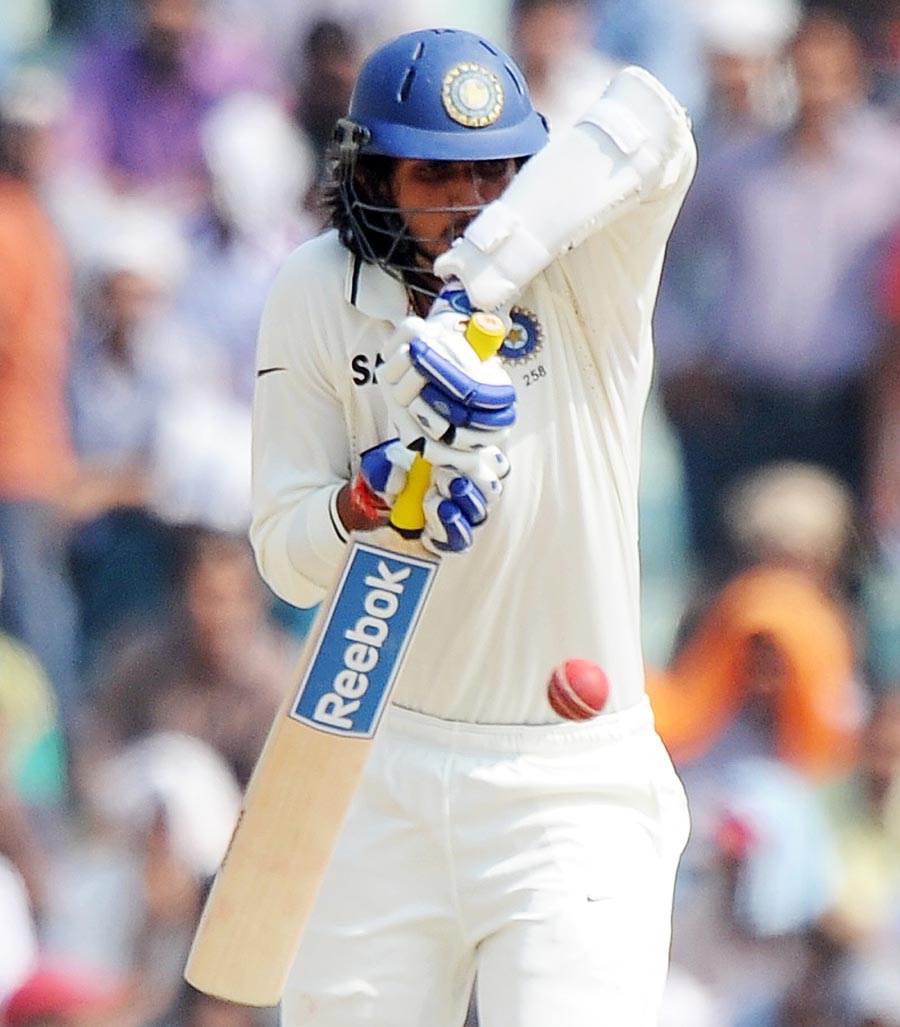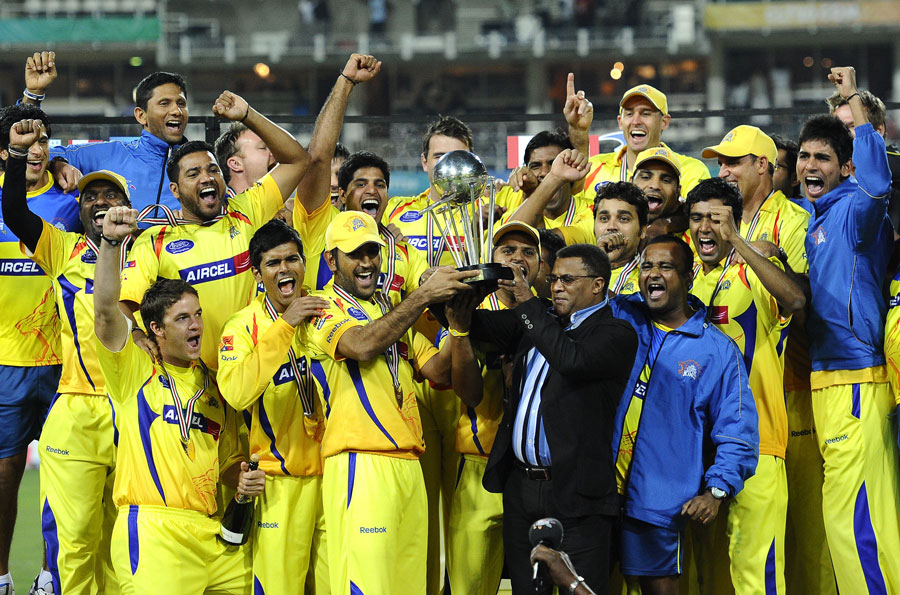December 29, 2010
A Tasmanian Titan: Ricky Ponting!
December 25, 2010
Cricket in Hong Kong and a pre-Boxing Day Roundup!
December 8, 2010
Why Ashes Exemplifies Test Cricket?
November 27, 2010
The Week of the Old-fashioned!
November 12, 2010
Haider's Disappearance - a Wake-up Call for World Cricket?
Click here for cricinfo's coverage of the controversy as it has unfolded thus far.
November 1, 2010
Cricket, this November!
October 11, 2010
The Wall near the Door!
October 5, 2010
A Humpty Dumpty Test Match
October 1- 2010 was the day when “Endhiran” released and people crowded for 2am show to watch it. Meanwhile, the test series between Australia and India started abnormally in a quite manner in Mohali. Australia started off on high with Watson and Ponting putting together 141 run partnership. When it is an Aussie-Indian clash you expect the balance to be topsy-turvy. Its like the Humpty dumpty who sat on the wall. This one didnt disappoint one bit.
Indians came back well with Zaheer making good use of the art he had mastered, reverse swing. The biggest bore was the rate at which the Aussies were scoring the runs. The usually aggressive Aussies played like they were scared for their life. The RPO of the post tea session on Day1 was 1.43. Now imagine sliding a hacksaw through your neck and thats what it felt like.
Once again on Day 2, the Aussies took charge and piled up the runs and ended up with a 1st innings total of 428 despite Zaheer’s fiver-for, thanks to Tim Paine and Mitchell Johnson scoring 92 and 47 respectively. India did get off to a good start with yet another Sehwag blitzkrieg with a better than ‘run a ball’ 59. Dravid and Raina gave good support to Sachin scoring 77 and 86 respectively. The match was back again in India’s hands but the fans had a heartbreak when Sachin fell 2 short of yet another 100 with that Australia took the upper hand bowling out India for 405 and Mitch picking a five-for.
The Aussies got off to a good start with an opening partnership of 87 runs. This time the runs came much quicker. Watson once again was the top-scorer with 56. A tall lanky Ishant Sharma, who was swatted off in the 1st innings came out of the ashes baiting 3 wickets in a spell, all big fish. Zaheer once again cleaned up the tail. The wickets of Hauritz and Hilfenhaus were dream deliveries, even top order batsmen would have nightmare facing such deliveries. The way Zaheer Khan is bowling with the old ball, he would be asking for “Second Old ball due” at the end of 80 overs. 215 was not a tough target for the Indians, considering this was team which chased big totals in the recent past. Advantage once again shifted to Australia when India were 55/4 at the end of Day 4.

Day 5 didnt start off on a good note with India tottering at 124-8. If this match was played between some tom,dick or it would’ve been over, but hey this is IND Vs AUS. Ishant Sharma camped the same crease where the top order batsmen were jumping to short deliveries of the Aussie Fast bowlers, on a wicket which was pretty tough to play short pitch bowling. Laxman despite his back problems, batted with silken touch. Ishant Sharma and Laxman took India to within 11 runs of the target from a hopeless position. There were many tense moments after Ishant was adjudged LBW when he wasn't and Ojha wasn’t when he really was LBW. Ojha and Laxman held the nerve and took India through to their “closest ever test win” with Laxman remaining unbeaten on 73. Yet another time the Aussies were stoven by Laxman. Ishant who started as a villain at day 1 conceding too many runs became a hero in a span of 5 days at the end of the test match. At the start of Day 5 everyone were screaming for Sachin, after all the hype it was a quite and Very Very Special Laxman who drew the “Laxman Rekha” for India.

Australia would be really down after losing such a close test match. They would need a lot to bounce back after this. It is really a shame this is just a 2 match series. The Match also marked Zaheer’s achievement of picking 250 test match wickets. I was jumping in joy not because India won but because i witnessed one of the greatest test matches ever played and that too between two evenly matched teams with a lot of “setting the cat among the pigeons” moments.
September 27, 2010
Champions League T20 - A Post-tournament Insight
The Chumps are like “hmm” “ah” “oh” just fillers. This tournament certainly proved they dont belong to this stage. Lets start with the Guyanese who lost all of their matches. They might have fancy Indian names with mutations like ‘Devendra Bishoo’ et all but they did not have any fancy batters or bowlers. Along with them are the “Central Stags” who were tied with the Guyanese for the ‘Top Chump’ perhaps we need a super over to break the tie. The Stags looked absolutely pathetic against even mediocre spin bowling, let alone top class spinners. The sorry tale is that the Central Stags are just a reflection of what New Zealand cricket is right now, totally dried up. Wayamba 11 aren't far behind, in my eyes they are equally pathetic. They have ended up 3rd in the chumps list only because they beat the Central Stags.
There are teams who were 'also-rans'. Barring the 3 chumps, the rest of the 7 teams can beat each other on any given day. These teams just couldn’t replicate their domestic form to make it to the semifinals of the tournaments. The lions, Bushrangers and Mumbai Indians just couldn’t bring their ‘A’ game. Bushrangers were pretty unlucky to not make it to the semis despite winning 3 of their 4 matches.
Usually only the best teams make it to the Knock out stages of any tournament. Beyond that it is purely how the team performs on that day, previous performances hardly matter. The classic example would be the Red Backs. They have pretty much won everything in their league and ended up loosing just one in the semis to be sent ‘Down Under’. RCB were also unlucky to lose Kallis in the league stages and then Steyn in the middle of the semifinals. Yesterday the SA champions and IPL champions locked horns and we all know who won it. No wonder Warriors are under the Kings. It wouldn’t be an understatement if i say they were the 2 deserving teams.
Many players came to fore in this tournament like Davy Jacobs, Aaron Finch, Michael Klinger, Colin Ingram and Dan Christian. You can really see the dominance of CSK if you look at the ‘Top Scorers’ and ‘Top Wicket Takers’. Three of the top five wicket takers and 2 of the top run scorers are from the Super Kings. Also both of M.Vijay and R.Ashwin top their respective charts. To notice that both have been brought up in Chennai brings a sense of pride and happiness that donned the pretty much the same streets I do.
One highlight of the final for me would be when Vijay went past Davy Jacobs’ tally of runs. Davy Jacobs ran to Vijay during the overs break to congratulate him on beating his tally *RESPECT*. That is the showcase of Sportsmanship of the highest order and hair raising moment for every true cricket fan. I wish Davy Jacobs a great career ahead. People like him are gems when you see no balls being bowled to stop batsmen from scoring centuries.
Yellows seems to dominate the cricket world like anything. Not long ago the Australians were marching rampant. Chennai Super kings have fallen into that bracket with 1 runners up, 1 semifinal, 1 IPL title and 1 champions of Champions title. For me CSK carries Chennai’s no nonsense approach to its cricket. Perhaps one of the least controversial, devoid any fights and a very cohesive and consistent unit. If any team carrying those qualities wins, it certainly makes me happy. The fact that is is CSK just makes it special. The sad part is that, yesterday was the last time they will play as an unit together, thanks to IPL’s decision of including 2 more teams a fresh auction. For me they will be remembered as The Invincibles, everything they touched turned golden yellow. Period!
